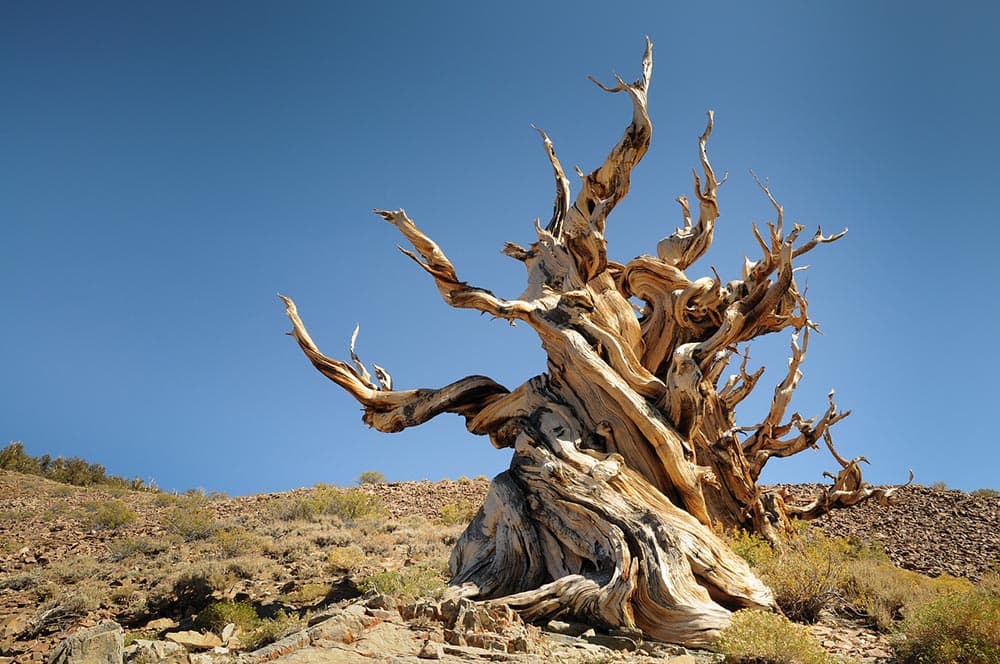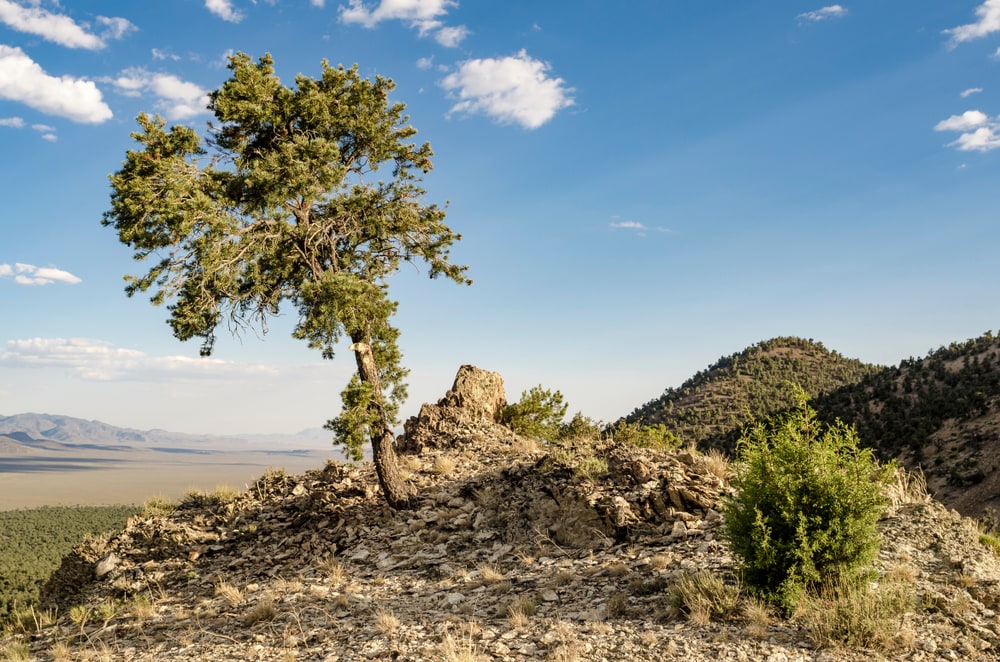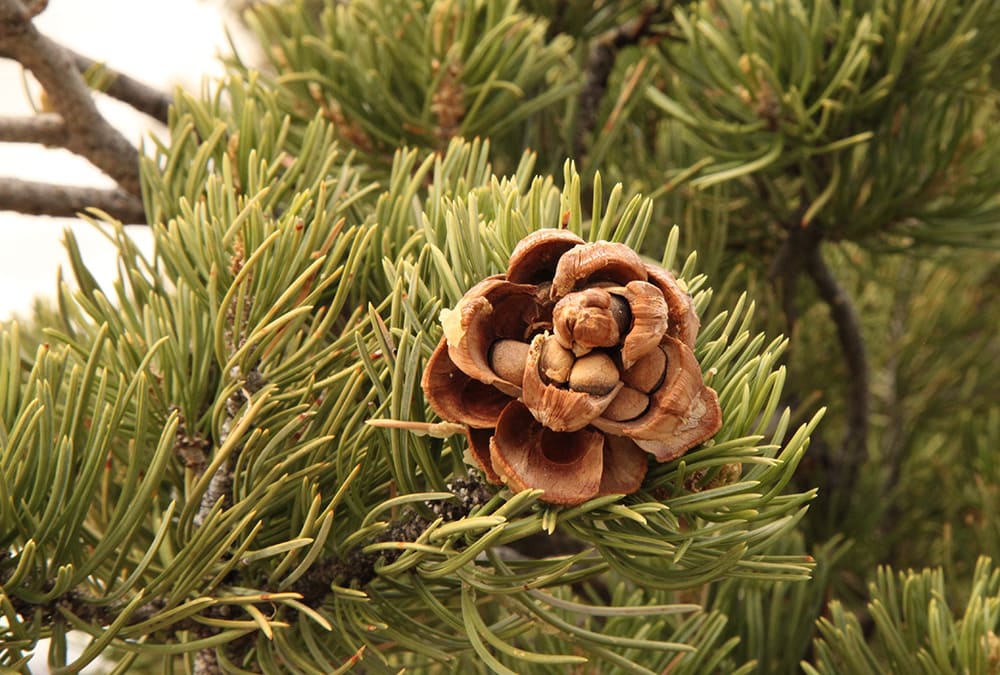What Is the State Tree of Nevada? Characteristics, Uses & FAQ
-

- Last updated:

Interestingly enough, Nevada has two state trees. Only two states in America have two state trees: Nevada and California. The official state trees of Nevada are the bristlecone pine and the single-leaf pinyon tree. These trees are native to the northwestern parts of Nevada. They make up a large percentage of the state’s forestlands.
These trees thrive in the high altitude and dry climate of Nevada. Besides, the bristlecone pine is one of the oldest living trees on Earth. It has an average lifespan of between 4,000–6,000 years! On the flip side, the single-leaf pinyon is a deciduous tree that grows up to 8 feet tall. It has a shallow root system that allows it to grow in harsh desert conditions where other trees would not survive.
Nevada is often described as a desert state, which explains why trees are scarce. However, the bristlecone pine and the single-leaf pinyon are the most prominent state trees of Nevada. We’ll discuss several characteristics and uses of each tree in this handy article. Also, we’ll look at how these two trees became the state trees of Nevada. So, keep reading to learn more!
Characteristics of the State Trees of Nevada
Nevada is home to a few unique trees, among them being its two state trees. The single-leaf pinyon and the bristlecone pine tree are considered rare gems in the state’s forests. These trees have different traits, but both serve their purpose as prominent landmarks in the desert landscape of Nevada.
Let’s look at several characteristics of the state trees of Nevada. With this, you’ll understand and appreciate them better.
Bristlecone Pine

The bristlecone pine (Pinus aristata) is a species of evergreen conifer. It’s endemic to the ranges of the southwestern United States and the Rocky Mountains. Usually, you can find these trees at altitudes of 5,500 feet (1,700 meters). Among all the conifers worldwide, the bristlecone pine has the longest lifespan.
The name bristlecone comes from its needle-like cones, which resemble bristles. It also refers to the needles’ tough nature, which allows them to grow under harsh conditions.
- Height: Bristlecone pines grow to a height of between 15–50 feet. They are small to medium-sized pines. The height affects its stability. The tree can become unstable as it gets taller. Bristlecone pines are also more prone to cracking.
- Foliage: The leaves of this tree are needle-like, short, and with a hairy underside. The needles are arranged spirally along the twigs, creating a long bottle-brush appearance that also helps them retain moisture during dry summers and winters. The leaves grow on the terminals of the tree branches. They are also arranged in groups, and each group has five leaves. The needles have a distinctive dark green color and sharp edges.
- Bark: The bark of bristlecone pines is thick and deeply furrowed, smooth, scaly, and reddish-brown. It grows plates rather than scales which makes it challenging for insects to get into the wood.
- The wood is dark brown or black and hard. So, cutting or shaping it is challenging. As the tree ages, it gets tougher and more resistant to fire damage. Older bristlecone pine trees have the thickest bark, which protects them from fires.
- Cones: Bristlecone pines are monoecious, meaning that male and female cones are produced on the same tree. Male trees produce pollen but no seeds and females produce seeds but no pollen. The male cones have prickly scales that cover the outside surface. The scales protect the seeds until they are ready to be released into the environment, where they can grow into new trees. The seeds take about 2 years to reach maturity. They may take even longer in areas with insufficient water or nutrients for seedlings to grow.
- Tree Trunk: Bristlecone pines are known for their twisted trunks. So, measuring the tree trunk diameter is challenging because of its appearance and shape.
Single-Leaf Pinyon

The single-leaf pinyon tree (Pinus monophylla) is native to the desert regions of the southwestern United States. It can be found in the Great Basin, Arizona, Nevada, Utah, and New Mexico. This tree is also native to the ranges of eastern and southern California and southeastern Idaho.
The single-leaf pinyon tree is a unique pine species. Of all the 110 pine species, it’s the only pine with leaves (needles) attached to the stems individually. Another unique characteristic of the single-leaf pinyon is that it has the largest and most delicious pine nuts worldwide.
- Height: The single-leaf pinyon is a slow-growing conifer. It’s relatively short, with a height of about 6 –8. It’s often found growing in open areas within its habitat range. It does not get enough nutrients in its habitat to grow tall enough to compete with other trees.
- Foliage: Single-leaf pinyon leaves are needle-like and usually arranged spirally on the twigs. The leaves are 1–2 inches long and have one pointed tip, which gives this species its name. They are covered with fine hairs on top, but they are smooth on the bottom. It gives them a bright green color even when they are mature. The color changes to brown as they age.
- Bark: The bark is gray with reddish-brown streaks. It becomes smooth as it ages. It also has shallow furrows and small scales that run across its surface.
- Cones: Its cones grow 1–2 inches long and contain one seed each. The cones are greenish-blue at first, turning brown when mature. Male cones appear in groups of 20–40. They’re yellow, purple, or dark red. Female cones are purple and solitary. They hang down on the tree branches throughout the year but open up in wintertime to release their seeds.
- Tree Trunk: Usually, the tree trunk of a single-leaf pinyon is twisted and bent. It has many branches and a bushy crown with green foliage.
How Were the State Trees Of Nevada Decided?
The single-leaf pinyon was the first tree to be adopted as the Nevada state tree. It became the official state tree of Nevada in 1953. Native Americans harvested pinyon tree nuts. They also picked pinyon tree nuts that fell on the ground. Pine nuts come from pine cones. Usually, they would eat them raw or roasted.
The second tree to be adopted as the state tree of Nevada was the bristlecone pine. It became the official state tree in 1987. The Nevada legislature chose the tree because it’s the oldest tree in Nevada and has been native to the state for more than 4,000 years. The tree represented the state in the National Grove of State Trees.
The two trees were chosen not only because of their prevalence in the state but also because each had striking characteristics that differentiated them from other pines.
Uses of the Bristlecone Pine and Single-Leaf Pinyon
State trees hold sentimental value, and they are a crucial part of a state’s history. But they’re also more than that. They are also helpful economically and culturally. So, it’s crucial to discuss the uses of the state trees of Nevada. Here are several uses:
Bristlecone Pine

You can extract turpentine from the resin of all pine trees. It’s diuretic and antiseptic. Also, it’s helpful as you can use it to treat bladder and kidney problems.
The resin from the tree is also applied externally to relieve pain from damaged tissue, such as burns or skin wounds. The pitch obtained from the resin can be used as a wood preservative or for waterproofing.
If you have respiratory problems, such as coughs and colds, turpentine can treat them. Also, turpentine can make varnish and waxes.
You can use bristlecone pine as firewood. The wood burns hot and fast, making it great for use as fuel in fireplaces or wood stoves. Little ash is left behind when burned, making it an excellent choice for campfires as well.
Single-Leaf Pinyon
Single-leaf pinyon is one of the most widely used pine species worldwide. The tree provides excellent shade to hikers, campers, and other outdoor enthusiasts.
Pinyon nuts are edible, although some people may experience an allergic reaction from eating them. The nuts are also used to make pinole. It’s ground into flour for making tortillas and other foods.
You can also extract turpentine from the resin of these trees. It’s a helpful antiseptic. The decoction from the resin of this pine gets rid of tapeworms and other internal parasites from the body.
The pitch obtained from the pine tree is helpful in preventing sunburns. It can be used as a face cream. The gum from the pine tree is helpful in dressing cuts and sores.
In Conclusion
For many people, the decision on a state’s tree is weighed down a great deal by politics, economics, and other environmental factors. In the end, some trees are hard to beat for their beauty and usefulness.
So, now you know when and how Nevada chose its state trees, the bristlecone pine and single-leaf pinyon, to represent the state well. No other state has such a diverse range of trees as Nevada, and it’s great that these magnificent trees represent the area.
Featured Image Credit: Will Pedro, Shutterstock
Contents

